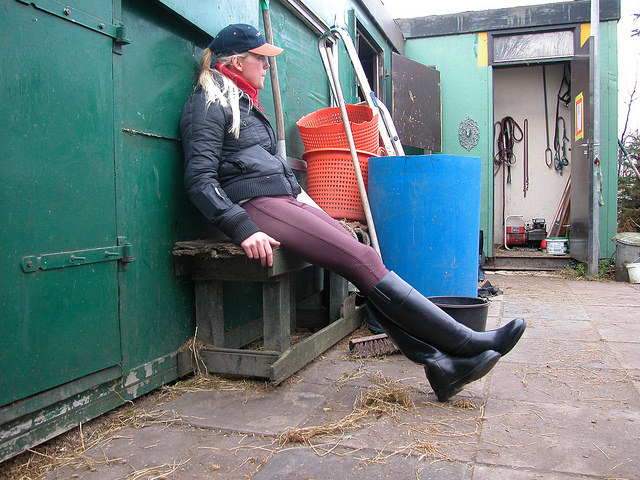In the age of handing horses off to grooms and jumping in Range Rovers for coffee runs, it’s important to remember that this sport is called horseback riding—as in these animals are willingly carrying us around on their backs and doing what we ask of them. The horse should always be put first. One of the most important things about learning to be a rider (because our education is continuous) is learning to be a horseman/woman as well.

So many people showing at the top level of this sport don’t know the first thing about horse care or horsemanship—but that’s only part of the problem. A bigger issue is that many don’t care to learn. There is a huge difference between not knowing and not caring, and it is a very important one.
Because a sizable portion of young riders are used to having the help of highly skilled grooms, they don’t have to think twice about learning the basics of horsemanship. While many of us learned how to put a bridle on as soon as we could walk, and how to wrap standing wraps soon after, some were never taught anything at all. The horse was always tacked up and ready for them from the beginning. They came to the barn and found said horse at the mounting block, got on and had their lesson. Maybe they handed out some treats or patted him a couple of times before being handed back to the groom. Convenience is such a huge part of our day-to-day lives that it only makes sense for it to infiltrate this industry. As a result of this convenience, learning basic horsemanship skills has fallen by the wayside.

Groomin’ aint easy. (flickr/aiglefetish)
I’m sure that if they were taught, plenty of these riders would be very interested in learning more about their horses and all that goes into their daily care. The problem is teaching horsemanship is slowly becoming increasingly outdated and difficult to do. It might seem ridiculous that learning to ride and learning horsemanship are separate entities—but it’s reality. People pay extra to have their horses taken care of and tacked up for them, and for professionals in the business, any form of income is important. Everyone needs to make a living somehow, and doing so in the horse world can be a struggle. Trainers want to educate these riders, but their interests differ so greatly from those of their students that communication is difficult when it comes to topics like horse health and care.

As riders, it is critical to know every component of our horse’s daily routine so you we are able to detect when something is not quite right. You should know when they take a funny step or coughing more than normal. Being familiar with the signs of colic can save a horse’s life, so too does knowing the difference between clear and nasal discharge. Simply paying attention will greatly improve your ability to spot the subtle signs when your horse isn’t feeling well, even if you don’t exactly know what they mean. Obviously, most riders are not veterinarians and don’t know what every single symptom means, but having the sense to alert a professional when something isn’t normal is imperative. When grooms spend every minute of the day with the horses they care for, they are often the ones to catch these signs, and grooms should not be solely responsible for a horse’s health.

©Alex Carlton
Without a doubt, grooms are some of the most vital players in the horse industry. They do so much hard work behind the scenes to make sure things go smoothly. They are up earlier than anyone else to get the ball rolling, and are usually the last ones out of the barn checking on the horses at night. Just because you have help does not make you any less of a horse person. Some of the most knowledgeable and hard-working people I know hire grooms simply to reduce their workload and save time during the day. These people are often the ones who appreciate and enjoy caring for their own horses the most. Even if they have the help of a groom, they still have the knowledge of how to do their own thing. This is how it should be. If you don’t make an effort to have a relationship with your horse, you’re missing out on the best part of equestrian sport, and also the most essential one.

Hands-on horsemanship is the best way to learn, but there are numerous resources (books, articles, people, etc.) out there to help in the education process. The best riding programs combine riding lessons and horsemanship in the learning process from the very beginning, teaching young equestrians the importance of the horse and everything they do for us. A number of recent efforts to emphasize the importance of horse health and care have been made within our sport. Specifically within the hunter jumper community, the USHJA has developed a national Horsemanship Quiz Challenge and the Emerging Athletes Program which includes horse care in the agenda. Likewise, the New England Equitation Championships have offered a prestigious Horsemanship Class for juniors since 1997, consisting of a written phase, a practicum phase and a riding phase.

(flickr/Michael)
Even with these wonderful programs sparking interest in young riders, there still needs to be a bigger emphasis on basic horsemanship. There is no way to deny that the care and health of our horses is the most significant aspect of equestrian sport.




 February 3, 2016
February 3, 2016 




























